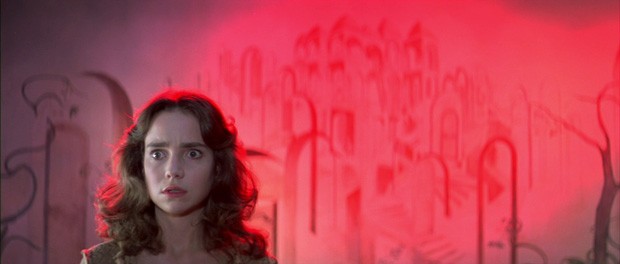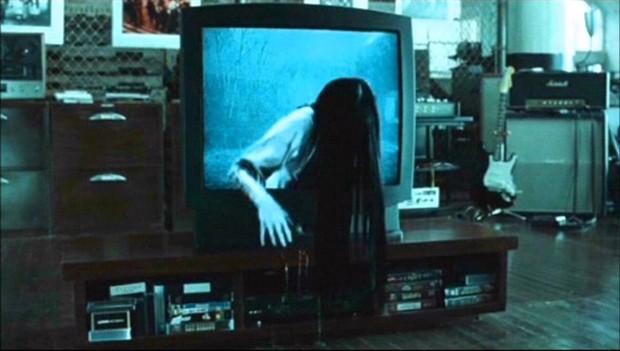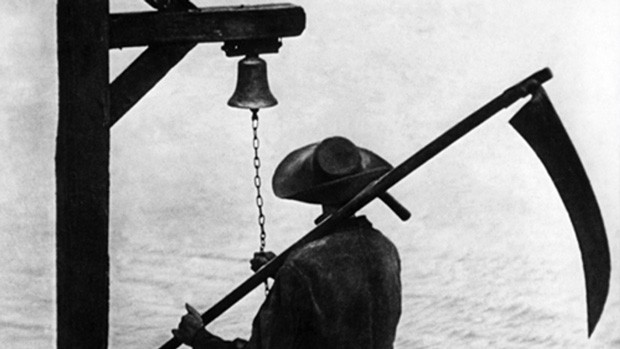10 horror films you’ll never forget
 “Startlingly beautiful”: Dario Argento’s 1977 film Suspiria. | Image courtesy of Seda Spettacoli.
“Startlingly beautiful”: Dario Argento’s 1977 film Suspiria. | Image courtesy of Seda Spettacoli.
Looking for a classic seasonal scare? Donato Totaro, film-studies lecturer at Concordia’s Mel Hoppenheim School of Cinema and editor of the monthly online journal Offscreen, is the man to ask.
Since arriving at Concordia in 1990, Totaro has specialized in horror films: his course-list includes “Horror and Fantasy” and his work has been published in Cult TV (2010), 100 European Horror Films (2007), The Cinema of Japan and Korea (2004), Fear Without Frontiers (2003) and Eaten Alive!: Italian Cannibal and Zombie Movies.
Here, in his words, are Totaro’s top 10 picks. You may not want to watch them alone.
No. 10: À Meia-Noite Levarei Sua Alma (At Midnight I’ll Take Your Soul)
Directed by José Mojica Marins, 1964, Brazil
The film that introduced Brazil (and subsequently the rest of the world) to one of most fascinating and contradictory characters in horror. The sadistic undertaker Coffin Joe is a self-driven man who will stop at nothing — certainly not torture, social disdain and murder — to sire a male progeny.
Autodidact director José Mojica Marins blended the ghoulish, dime-store appeal of the carnival with a subtext of Nietzschean nihilism, a hint of Macumba religion and a heavy dose of blasphemy.
No. 9: Ringu
Directed by Hideo Nakata, 1998, Japan
The seminal film that triggered the last great horror cycle of the late 20th century, J-horror. At a time when horror went extreme and explicit, Hideo Nakata revolutionized it (along with The Blair Witch Project and The Sixth Sense) by returning to an aesthetic of slow-burn dread that culminated in one of the scariest climaxes ever.
 “Slow-burn dread” in Hideo Nakata’s 1998 film Ringu | Image courtesy of Toho Company Ltd.
“Slow-burn dread” in Hideo Nakata’s 1998 film Ringu | Image courtesy of Toho Company Ltd.
No. 8: The Exorcist
Directed by William Friedkin, 1973, U.S.
For all its blockbuster horror pyrotechnics — from spewing green bile to spinning top heads and levitating corpses — The Exorcist is a nuanced study in the visual and auditory representation of good vs. evil through the patterned use of light and dark.
Powerful performances from Ellen Burstyn, Linda Blair, Jason Miller, Max Von Sydow and Lee J. Cobb cement the film’s undeniable emotional resonance.
No. 7: The Texas Chainsaw Massacre
Directed by Tobe Hooper, 1974, U.S.
Time has been kind to this increasingly important American horror film, which is equal parts grotesque fairy tale and stinging social satire of patriarchal capitalism.
Its broadening influence can be felt in almost every offshoot horror sub-genre since, from the serial-killer film to the stalker film (with its “final girl” trope), from the backwoods/rural/cannibal horror film to torture porn.
No. 6: Mask of Satan (Black Sunday)
Directed by Mario Bava, 1960, Italy
Along with a few other seminal films of the late 1950s and early 1960s (Les Yeux sans visage, Psycho, Hell, Peeping Tom), Mario Bava’s black-and-white masterpiece stakes a claim as one of the quintessential modern horror films.
It simultaneously looks back at the genre’s glorious past — Universal’s 1930s horror, Val Lewton’s noirish horror of the 1940s — and ahead to the supernatural shocks of the 1970s and 1980s. They don’t get much more gothic than this (Barbara) “Steeley” beauty.
No. 5: Kwaidan
Directed by Masaki Kobayashi, 1964, Japan
Four sublime Japanese ghost stories (kaidan-eiga) that stand as examples of textual stylization: each of Patrick Lafcadio Hearn’s classic nightmarish tales offers a complementary palette of colour, sound and image.
With its innovative frisson-inducing sound design — a casebook example in using sound and silence in equal measure — as well as its archetypical long, black-haired female yūrei or spirit, Kwaidan is a key progenitor to the J-horror movement.
No. 4: Les Yeux sans visage
Directed by Georges Franju, 1960, France
The first great medical horror film, Les Yeux sans visage features a genius surgeon driven by guilt and professional indifference to commit a series of torturous murders.
It achingly blends the clinical eye of a scientist with the soul of a poet. Édith Scob’s “masked” performance as the guinea-pig daughter remains one of the genre’s finest.
 “Sepulchral cinematography” in Carl Theodor Dreyer’s Vampyr (1932) | Courtesy of Vereinigte Star-Film GmbH
“Sepulchral cinematography” in Carl Theodor Dreyer’s Vampyr (1932) | Courtesy of Vereinigte Star-Film GmbH
No. 3: Vampyr
Directed by Carl Theodor Dreyer, 1932, Denmark
With its moving shadows, disorienting points of view and sepulchral cinematography, Vampyr is the closest a film has ever come to representing a waking nightmare.
A vampire flick dripping with dread and sexual angst.
No. 2: Night of the Living Dead
Directed by George Romero, 1968, U.S.
Much of the credit (!) for the current zombie zeitgeist and everything apocalyptic goes back to this, the first modern zombie horror film.
Everything dies a slow death in Night of the Living Dead — family, government, community, civility, hope. It doesn’t get much bleaker than this.
No. 1: Suspiria
Directed by Dario Argento, 1977, Italy
Supernatural goings-on at a German Art-Deco all-girl’s ballet school turn into a deliriously surreal adult Alice in Wonderland.
Photographed by Luciano Tovoli, Suspiria is perhaps the most startlingly beautiful colour horror film ever made — and one of the grandest cinematic expressions of “murder-as-art.”